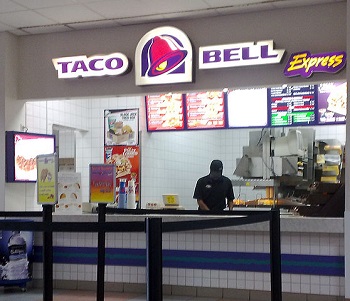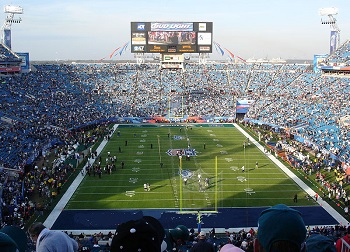The application uses the GPS built into the device to ensure that food is served fast and hot.
Taco Bell is about to join the latest mobile apps that will be bringing enhancements to ordering functionalities over smartphones and tablets, as they expand the testing of location based marketing and services using GPS technology.
Californian consumers will likely be the first ones who will be able to take advantage of the new app.
Though using location based technology in mobile apps may seem as though it is a little bit risky, as it closes the window for error quite a bit, this does not seem to be the actual experience at the Taco Bell test restaurants, so far. It could seem that people would try to make their food orders on their way to the restaurant and that this would increase the likelihood of long wait times, but so far, those who have tested it are often reporting that their maximum wait times are around two minutes.
Taco Bell is using the design of its mobile apps to better suit the needs of its primary demographic.
The consumers who eat at their quick service restaurants the most are, according to Taco Bell, young Millenials. As those are the people who are the most likely to have smartphones and to use them for a greater number of daily activities, it only seems to make sense that restaurants tap into that with location based marketing and services that can help to increase their sales.
Their latest report indicated that among smartphone owners, two out of every five will use their mobile devices for finding a place to eat. Providing these diners with a way to not only find the restaurant locations very easily using GPS technology, but also offering a way to actually order the food while on the go so that it will be ready upon arrival.
Though Taco Bell is not the first company to implement mobile ordering, its mobile apps appear to be the first ones that will be full featured and that provide the ability to order anything from the menu – including customizations of those menu items – while allowing the customer to tell the restaurant when he or she will be arriving at the location to pick it up.
BWild |
February 13, 2014
This not only indicated that mobile advertising is going mainstream, but that specific techniques are the most worthwhile.
It came as no surprise that mobile would play an important role in the advertising that went on at Super Bowl 2014, but the popularity and success of location based marketing was considered to be a highly notable trend, this year.
This data has now been released following the first massive advertising event of the year.
Social media marketing had already been expected to play an important role, this year, and it certainly did. The Super Bowl ads were riddled with opportunities for viewers to take part in interactive campaigns. But it appears to be the location based marketing techniques that truly took the cake throughout the event, particularly due to additional efforts such as the wireless beacons that were installed by the NFL within the stadium as well as in areas such as Times Square.
This gave fans the opportunity to take part in location based marketing campaign interactions.
The techniques gave the fans the ability to do everything from finding the nearest bathroom to discovering the closest place where they could purchase licensed Seahawks gear. So far, this is likely the largest mainstream event to use wireless transmitters specifically for this type of advertising purpose. That said, it doesn’t look like it’s going to stop.
The success of the event only secured the intentions of the MLB to add its own beacons, but this will also be occurring outside of sports advertising. American Eagle Outfitters and Macy’s have also announced their own campaigns that will involve the use of beacons.
This type of hyper location based marketing helps to target consumers at precisely the best possible time to reach them to shop for products when they are already thinking about that type of purchase, and when they are most ready to pay attention to deals for products and to learn about additional items that are available.
While this isn’t necessarily a brand new concept, it is becoming truly mainstream for the first time due to the widespread use of smartphones, using techniques such as geofencing, geoaudiencing, and geoconquesting, among others.



